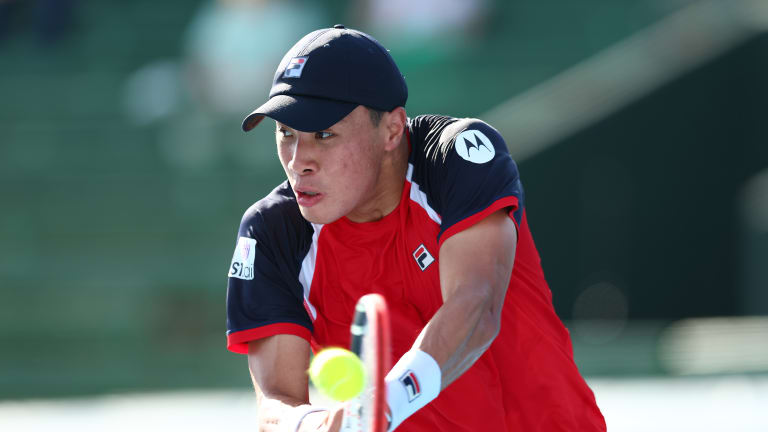NEW YORK—The tennis hype machine is a conceptual device, but it can malfunction like a mechanical one that misses a stitch, loses a screw, or pops a leak. That may help explain why Brandon Nakashima, the 6’2” 23-year-old from San Diego with a wicked backhand and an all-American, multi-cultural background, seems to have fallen through the cracks in our sports consciousness.
Nakashima, who advanced to the third round of the US Open on Wednesday with a neat, straight-sets win over France’s Arthur Cazaux, is heading for a clash with No. 18 seed and Wimbledon semifinalist Lorenzo Musetti. Nakashima, currently ranked No. 50, is part of a well-publicized generation of American players, yet upon hearing his name a fan might be prone to ask, “Who the heck is that?”


